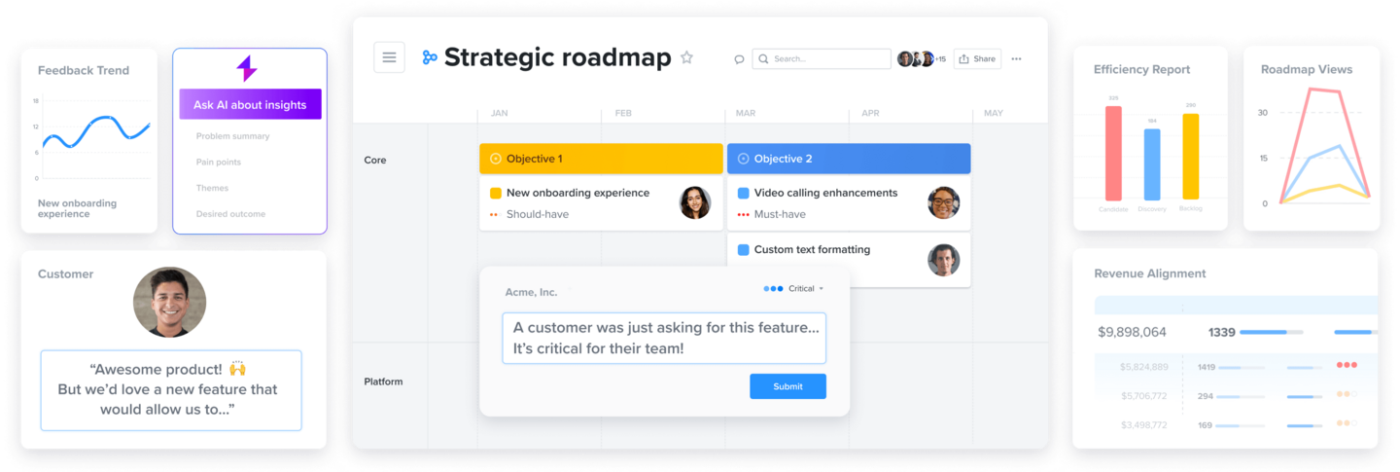Ever found yourself thinking, “Linear is great, but something’s missing”?
While Linear excels at software project tracking, many teams need more flexibility in their project management toolkit. Whether you’re looking for better collaboration features, more customizable workflows, or simply a fresh approach, we’ve got you covered.
According to a Wellingtone study, over half of teams express dissatisfaction with their current project management tools, with only 35% reporting moderate to full satisfaction.
The key? Finding software that grows with your team—not against it.
Let’s explore the top Linear alternatives that could transform how your team works together.
- Linear Limitations
- Linear Alternatives at a Glance
- The 13 Best Linear Alternatives to Use
- 1. ClickUp (Best for collaborative project management)
- 2. Jira (Best for agile development teams)
- 3. Asana (Best for marketing and creative teams)
- 4. Trello (Best for simple project visualization)
- 5. Aha! (Best for product road mapping)
- 6. monday.com (Best for customizable workflows)
- 7. ProofHub (Best for client collaboration)
- 8. Todoist (Best for personal task management)
- 9. Productboard (Best for customer-centric product management)
- 10. Wrike (Best for enterprise project management)
- 11. Hive (Best for resource management)
- 12. GitHub (Best for code-centric project management)
- 13. Notion (Best for documentation-heavy projects)
⏰ 60-Second Summary
Short on time? Here’s a quick overview of the best Linear alternatives for different use cases:
- ClickUp: Best for collaborative project management
- Jira: Best for agile development teams
- Asana: Best for marketing and creative teams
- Trello: Best for simple project visualization
- Aha!: Best for product road mapping
- monday.com: Best for customizable workflows
- ProofHub: Best for client collaboration
- Todoist: Best for personal task management
- Productboard: Best for customer-centric product management
- Wrike: Best for enterprise project management
- Hive: Best for resource management
- GitHub: Best for code-centric project management
- Notion: Best for documentation-heavy projects
Linear Limitations
Linear app is a project management and issue-tracking tool designed to help software development teams streamline their workflows, manage projects, and track issues efficiently.
While Linear shines in its simplicity and developer-first approach, it comes with several notable constraints:
- Limited view options beyond the standard issue tracker ❌
- Minimal customization for non-development workflows ❌
- Basic reporting capabilities compared to full-featured project management tools ❌
- Restricted integration options outside the development ecosystem ❌
- No built-in document collaboration features ❌
- Limited resource management capabilities ❌
These limitations often push teams to seek alternatives that offer more versatile project management features while maintaining the clean, efficient interface that made Linear popular.
Linear Alternatives at a Glance
| Tool Name | Best For | Standout Feature |
| ClickUp | Collaborative project management | AI-powered project management with unified workspace capabilities |
| Jira | Agile development teams | Advanced roadmaps for complex multi-team project planning |
| Asana | Marketing and creative teams | Workflow builder for non-technical team automation |
| Trello | Simple project visualization | Butler automation engine for workflow optimization |
| Aha! | Product road mapping | A block-based system combining docs and project management |
| monday.com | Customizable workflows | Flexible workflow engine for custom process creation |
| ProofHub | Client collaboration | Integrated proofing and feedback system with flat-rate pricing |
| Todoist | Personal task management | Natural language processing for quick task creation |
| Productboard | Customer-centric product management | Customer feedback to feature development pipeline |
| Wrike | Enterprise project management | Three-pane interface for portfolio-to-task visibility |
| Hive | Resource management | Advanced resource allocation and capacity planning |
| GitHub | Code-centric project management | Direct integration between code and project management |
| Notion | Documentation-heavy projects | Block-based system combining docs and project management |
The 13 Best Linear Alternatives to Use
Selecting the right Linear alternative requires understanding how each tool addresses specific project execution challenges.
Each option brings unique features and capabilities that better suit your team’s needs than Linear’s development-focused approach.
1. ClickUp (Best for collaborative project management)
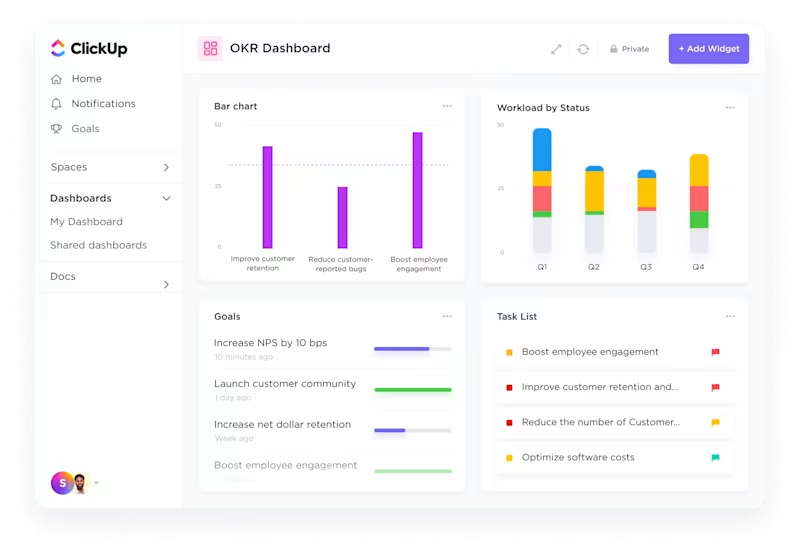
While Linear focuses primarily on software development workflows, ClickUp, the everything app for work, expands beyond this to unify all team operations.
The ClickUp for Project Management solution combines task management, collaboration tools, and automation to streamline project delivery.
For instance, VMware consolidated more than five different tools into ClickUp’s platform, creating a standardized system for global operations. The results were measurable: project setup and reporting became 8 times faster, while teams saved 95% of time on quarterly business review preparations.
When you compare Jira vs. ClickUp, ClickUp’s project management software offers broader functionality than traditional development-focused tools like Jira. While Jira excels in software development workflows, ClickUp provides these same capabilities while extending beyond dev-team needs.
ClickUp Tasks
Project teams often start with the ClickUp Tasks feature for collaborative work management. This feature forms the foundation of any workflow. It breaks down tasks into subtasks, organizes them with custom statuses, and assigns them to multiple team members.

ClickUp Views
The way teams view and interact with these tasks makes ClickUp remarkably versatile. The ClickUp Views feature offers 15+ fully customizable views that let teams tailor their workflow to fit their needs.

While developers might prefer a Kanban board for sprint management, project managers can simultaneously view the same data in a Gantt chart for timeline planning.
This flexibility extends to Calendar views for deadline tracking, List views for quick task processing, and ClickUp Mind Maps for project planning. Cross-functional teams can switch between these views without losing data consistency, enabling everyone to work in their preferred style.
ClickUp Automations
That’s not all. You can use ClickUp Automations to assign tasks automatically, post comments, change statuses, and move lists.

Furthermore, the software allows teams to create and edit documents in real time, use ClickUp Whiteboards for brainstorming sessions, and maintain version control for essential files.
ClickUp Brain
The platform’s AI, ClickUp Brain, boosts efficiency by automating routine and repetitive tasks and providing intelligent suggestions. From creating tasks based on recurring patterns to assisting with project documentation, the AI reduces manual effort while improving accuracy.

Additionally, ClickUp Goals makes goal-setting and tracking effortless, allowing teams to set measurable targets that automatically update as tasks progress, ensuring alignment and clarity throughout the project lifecycle.
ClickUp best features
- Create custom project templates for quick setup and standardization
- Set up advanced workflow automations with conditional logic
- Generate comprehensive project analytics and custom reports
- Utilize formula fields for automatic calculations and data processing
- Manage team workload with capacity planning tools
- Create interactive project wikis and knowledge bases
ClickUp limitations
- Initial setup requires a time investment to customize workflows
- Advanced features may have a learning curve for new users
ClickUp pricing
- Free Forever
- Unlimited: $7/month per user
- Business: $12/month per user
- Enterprise: Contact for pricing
- ClickUp Brain: Add to any paid plan for $7 per member per month
ClickUp ratings and reviews
- G2: 4.7/5 (10,000+ reviews)
- Capterra: 4.6/5 (4,000+ reviews)
What are real-life users saying about ClickUp?
Here’s what Nebi K, co-founder of a small business, has to say about ClickUp:
2. Jira (Best for agile development teams)
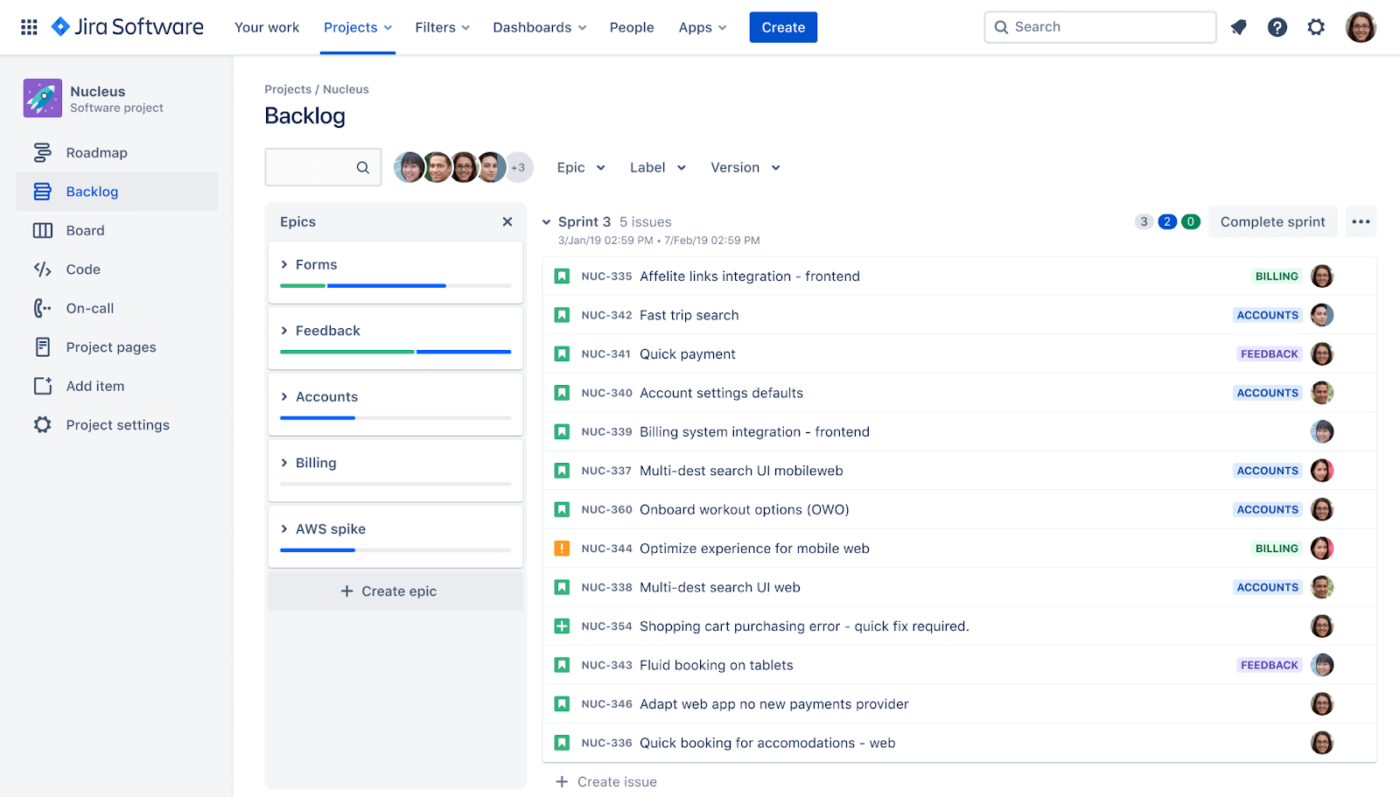
How do you track thousands of code changes, bug fixes, and feature requests without losing sight of the big picture? This challenge led to Jira’s evolution beyond basic issue tracking.
Unlike Linear’s streamlined but limited approach, Jira project management software offers deeper customization options for complex workflows. Where Linear excels in simplicity, Jira provides enterprise-scale features that support large, distributed teams.
If you’re specifically thinking of Linear vs. Jira, the latter excels at scaling agile practices across large organizations, with robust issue tracking and sprint management tools that surpass Linear’s capabilities.
🧠 Fun Fact: ‘Jira’ is a truncation of ‘Gojira,’ which means Godzilla in Japanese. This name was inspired by the internal bug-tracking tool Bugzilla, which Atlassian’s developers had used before creating Jira.
Jira best features
- Configure custom JQL queries for advanced filtering
- Set up automated release notes from issue updates
- Create custom workflow rules with no-code triggers
- Design team-specific estimation schemes
- Build custom dashboards with real-time metrics
- Enable cross-project dependency tracking
Jira limitations
- Complex setup and administration
- Can be overwhelming for smaller teams
Jira pricing
- Free: Up to 10 users
- Standard: $7.53/month per user
- Premium: $13.53/month per user
- Enterprise: Custom pricing
Jira ratings and reviews
- G2: 4.3/5 (6,000+ reviews)
- Capterra: 4.4/5 (15,000+ reviews)
What are real-life users saying about Jira?
One user shared their mixed but generally positive experience with Jira:
3. Asana (Best for marketing and creative teams)

What if your project management tool could think like a creative professional? This question drove Asana’s development into something more versatile.
While Linear serves development teams well, Asana breaks down the barriers between technical and creative work. Where Linear’s interface might challenge non-technical users, Asana’s Workflow Builder creates an intuitive environment accessible to all team members.
The platform offers more versatile project views than Linear, integrating development tasks with creative workflows while handling approvals, content calendars, and campaigns—features Linear users often need separate tools for.
🧠 Fun Fact: The name ‘Asana’ is derived from a Sanskrit word that refers to a posture or position, particularly in yoga. It reflects the company’s mission to help users find balance and efficiency in their work processes, much like yogis find balance in their poses.
Asana best features
- Create custom project templates with nested subtask structures
- Set up automated approval workflows
- Design custom form fields for work requests
- Build custom reporting dashboards
- Enable workload balancing across teams
- Configure custom project milestones
Asana limitations
- Limited subtask management compared to Linear
- No built-in time tracking
Asana pricing
- Personal: Free
- Starter: $13.49/month per user
- Advanced: $30.49/month per user
- Enterprise: Custom pricing
Asana ratings and reviews
- G2: 4.4/5 (10,000+ reviews)
- Capterra: 4.5/5 (13,000+ reviews)
What are real-life users saying about Asana?
One Asana user shared their experience, highlighting how essential it has become for their team:
4. Trello (Best for simple project visualization)

When teams get lost in complex project tools, clarity suffers. Trello’s intuitive boards bring visual simplicity back to project management.
Trello prioritizes a visual-first approach, contrasting Linear’s structured development focus. Its Kanban boards offer instant project visibility, while the Butler automation engine manages routine tasks. While Linear excels in development workflows, Trello streamlines project tracking for both software teams and non-technical users.
Trello best features
- Design multi-step automation rules with Butler
- Create advanced card filtering systems
- Build custom power-up combinations
- Configure template boards for repeatable processes
- Enable cross-board dependency tracking
- Set up custom labels and categorization schemes
Trello limitations
- Basic project management features for complex projects
- Restricted view options compared to alternatives
Trello pricing
- Free: Basic features for individuals and small teams
- Standard: $6/month per user
- Premium: $12.5/month per user
- Enterprise: $17.50/month per user
Trello ratings and reviews
- G2: 4.4/5 (13,000+ reviews)
- Capterra: 4.5/5 (23,000+ reviews)
📮ClickUp Insight: Nearly 20% of our survey respondents send over 50 instant messages daily. This high volume could signal a team constantly buzzing with quick exchanges—great for speed but also ripe for communication overload.
With ClickUp’s integrated collaboration tools, like ClickUp Chat and ClickUp Assigned Comments, your conversations are always linked to the right tasks, enhancing visibility and reducing the need for unnecessary follow-ups.
5. Aha! (Best for product road mapping)
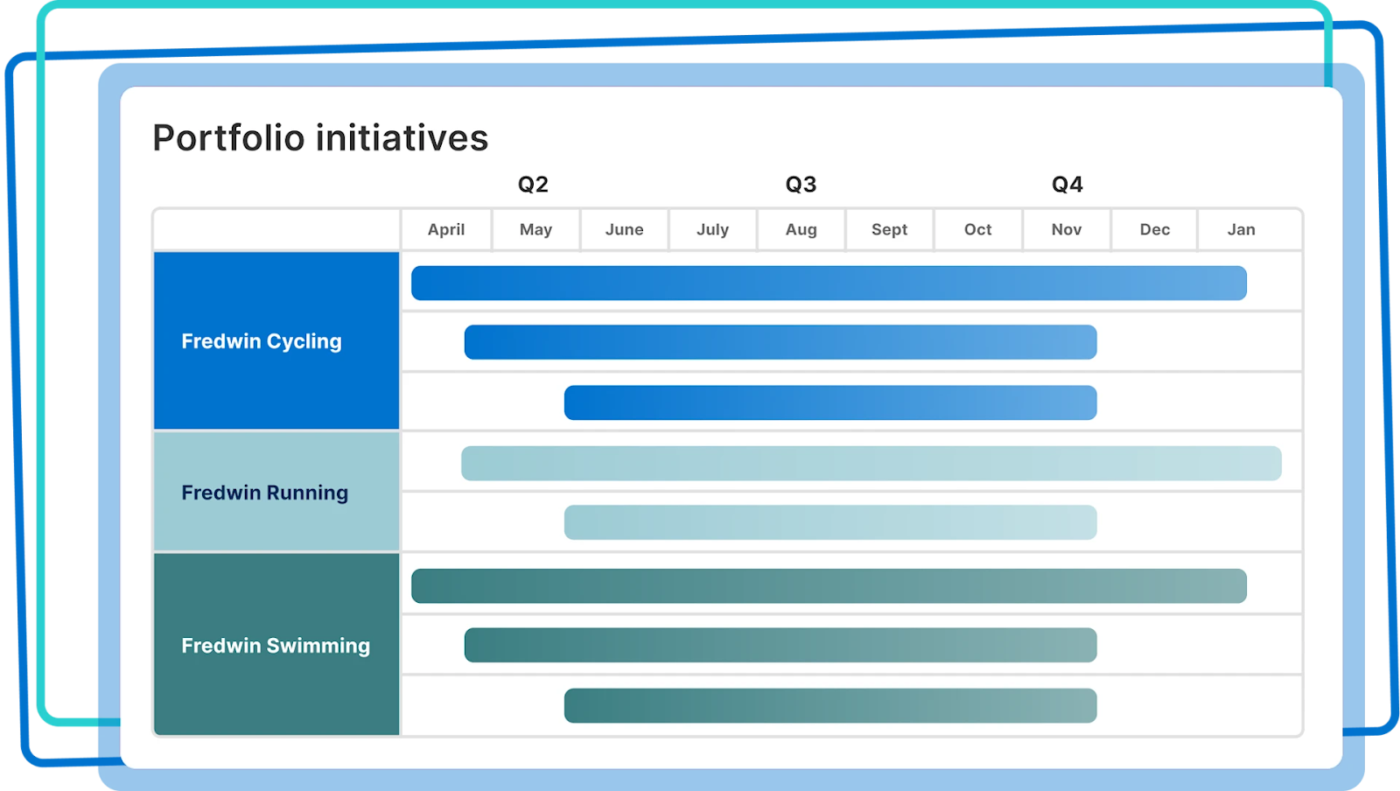
Some tools manage tasks; others manage strategies—Aha! does both. It connects product strategy with development execution through robust requirements management, mapping customer feedback to features, and tracking progress against strategic goals.
Aha! best features
- Create scenario planning models
- Design custom scoring metrics for features
- Set up competitive analysis frameworks
- Build capacity planning algorithms
- Configure custom initiative tracking
- Enable strategic portfolio views
Aha! limitations
- Steep learning curve for new users
- Limited task management features for non-product teams
Aha! pricing
- Premium: $74/month per user
- Enterprise: $124/month per user
- Enterprise+: Custom pricing
Aha! ratings and reviews
- G2: 4.4/5 (300+ reviews)
- Capterra: 4.7/5 (500+ reviews)
What are real-life users saying about Aha!?
A user highlighted the product’s strength in organizing and managing roadmaps effectively:
6. monday.com (Best for customizable workflows)
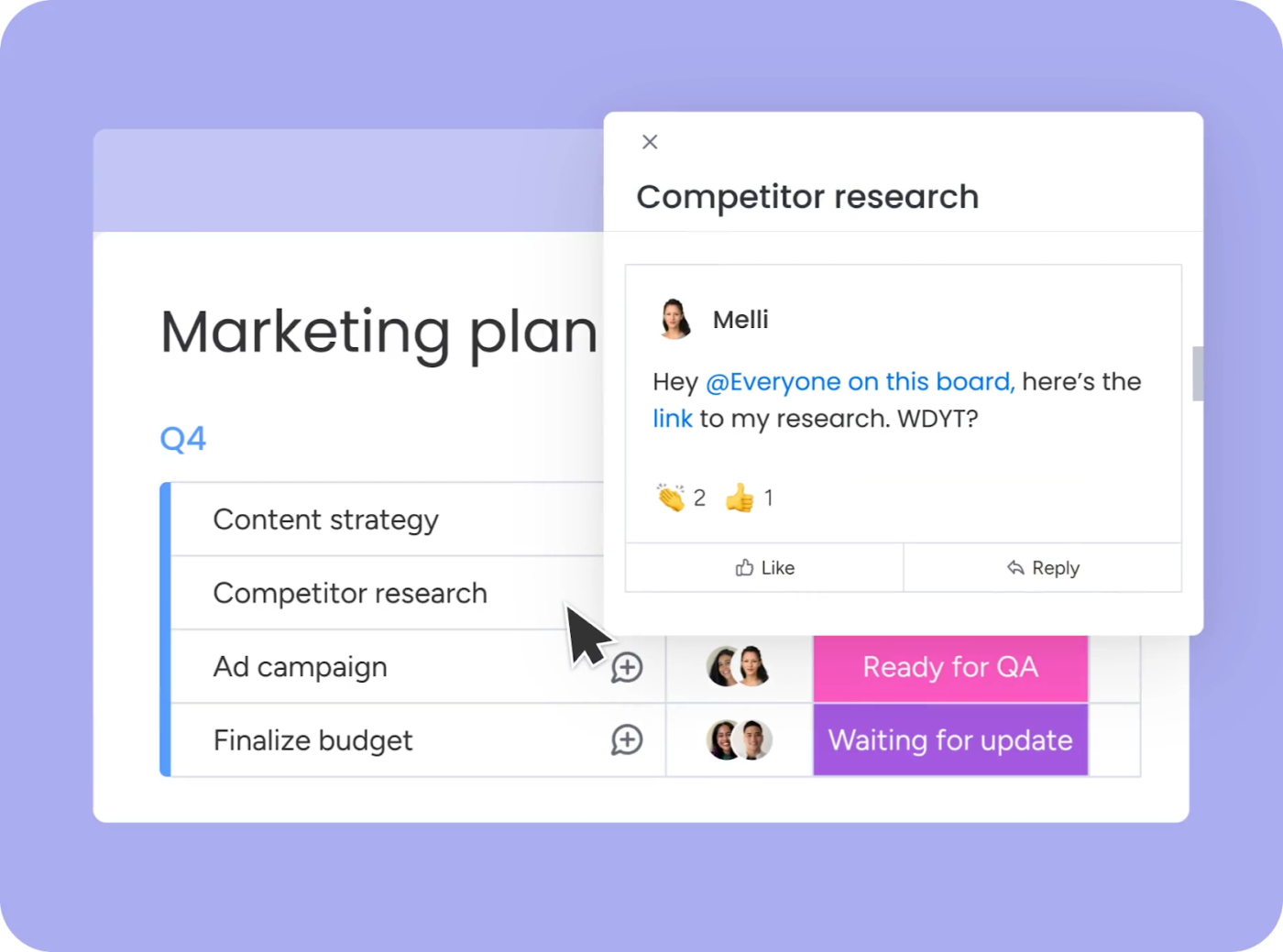
When one-size-fits-all project management feels like a straitjacket, teams need the freedom to create their own solutions. Touted as one of the most popular Asana alternatives, monday.com makes this possible by letting you build exactly what you need.
Linear follows a prescriptive project management approach, while Monday.com enables teams to build workflows from the ground up. Its flexible workflow engine goes beyond Linear’s fixed structure, supporting custom processes for any business need.
While Linear specializes in development, Monday.com’s modular design adapts to everything from marketing to HR, making it a versatile choice for cross-departmental project management.
monday.com best features
- Build custom dashboards with drag-and-drop widgets
- Create multi-level dependencies between items
- Set up custom automation recipes
- Design team-specific work views
- Configure advanced formula columns
- Enable time-tracking with custom workweeks
monday.com limitations
- Higher tiers are needed for advanced features like time tracking
- Workflow customization can be overwhelming initially
monday.com pricing
- Individual: Free up to 2 users
- Basic: $12/month per user
- Standard: $14/month per user
- Pro: $24/month per user
- Enterprise: Custom pricing
monday.com ratings and reviews
- G2: 4.7/5 (12,000+ reviews)
- Capterra: 4.6/5 (5,000+ reviews)
What are real-life users saying about monday.com?
One user praised the platform’s design and user experience:
7. ProofHub (Best for client collaboration)

ProofHub streamlines collaboration with its integrated proofing system, simplifying feedback and approvals. Unlike Linear’s technical focus, ProofHub combines project management and client collaboration in one user-friendly platform.
It centralizes conversations, files, and deadlines, making client communication effortless. With a flat-rate pricing model, it offers better value than Linear’s per-user pricing, making it a cost-effective choice for growing teams working with external collaborators.
ProofHub best features
- Create custom approval workflows
- Design branded client portals
- Set up multilingual interfaces
- Build custom project templates
- Configure role-based access levels
- Enable white-labeling options
ProofHub limitations
- Limited integration options compared to competitors
- Basic reporting functionality
ProofHub pricing
- Essential: $50/month (flat-rate)
- Ultimate Control: $99/month (flat-rate)
ProofHub ratings and reviews
- G2: 4.6/5 (100+ reviews)
- Capterra: 4.6/5 (100+ reviews)
What are real-life users saying about ProofHub?
A user shared their enthusiasm for the platform’s ease of use and organization:
8. Todoist (Best for personal task management)
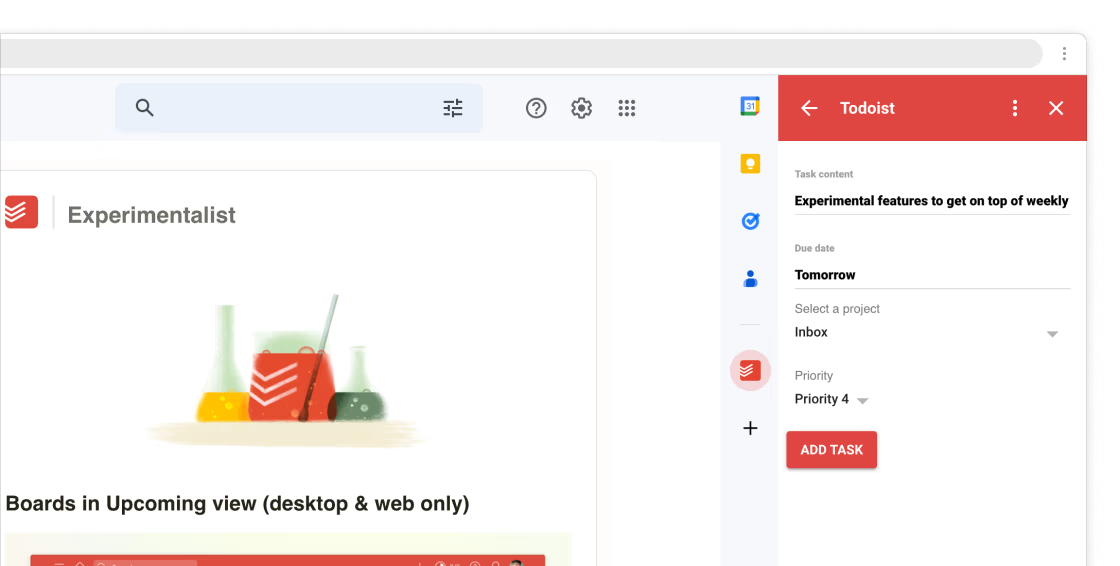
Emphasizing simplicity, Todoist blends personal task management with team collaboration.
Its natural language input enables quick task creation, avoiding the complexity of structured systems. Where Linear feels overwhelming for individual tasks, Todoist offers a streamlined alternative that scales effortlessly.
With a minimalist design and flexible functionality, it adapts to solo users and teams, making it a more approachable choice than Linear’s development-focused workflow.
👀 Did You Know? Unlike Boolean-based search, NLP uses semantic processing to analyze word relationships and intent, enabling more intuitive, context-aware responses.
Todoist best features
- Create custom productivity scores
- Design advanced filter queries
- Set up location-based reminders
- Build habit-tracking systems
- Configure smart task scheduling
- Enable cross-project task relationships
Todoist limitations
- Limited advanced project management features
- Basic collaboration tools
Todoist pricing
- Beginner: Basic features
- Pro: $2.5/month per user
- Business: $8/month per user
Todoist ratings and reviews
- G2: 4.4/5 (800+ reviews)
- Capterra: 4.6/5 (2,500+ reviews)
9. Productboard (Best for customer-centric product management)
Without clear customer insights, development teams risk building unwanted features.
Productboard connects feedback to development with advanced prioritization, balancing user needs and business goals. Its roadmap tools enhance transparency with stakeholders.
Unlike Linear’s execution-focused approach, Productboard bridges customer input and development. With more sophisticated prioritization than Linear’s basic settings, it empowers teams to make data-driven decisions.
Productboard best features
- Consolidate customer feedback from multiple sources
- Create data-driven feature prioritization frameworks
- Share targeted roadmaps with different audiences
- Track feature development progress
Productboard limitations
- Higher price point than general project management tools
- Limited task management capabilities
Productboard pricing
- Starter: Free
- Essentials: $25/month per user
- Pro: $75/month per user
- Enterprise: Custom pricing
Productboard ratings and reviews
- G2: 4.3/5 (200+ reviews)
- Capterra: 4.7/5 (100+ reviews)
What are real-life users saying about Productboard?
A user highlighted Productboard’s value for software companies:
10. Wrike (Best for enterprise project management)

As teams scale, visibility fades—but Wrike’s three-pane interface keeps projects crystal clear. It enables seamless navigation from portfolios to tasks, acting as an enterprise project control center. With customizable workflows, advanced reporting, and enterprise security, Wrike excels at managing complexity.
Unlike Linear’s simpler layout, it visualizes intricate hierarchies and offers portfolio management, custom request forms, and resource planning—ideal for organizations with strict compliance needs.
Wrike best features
- Create custom request forms with dynamic fields
- Design advanced analytics dashboards
- Set up project health monitoring
- Build custom workflow triggers
- Configure enterprise security rules
- Enable cross-department resource allocation
Wrike limitations
- The complex interface requires time to learn
- Advanced features reserved for higher tiers
Wrike pricing
- Free: Basic features
- Team: $10/user/month
- Business: $24.80/user/month
- Enterprise: Custom pricing
Wrike ratings and reviews
- G2: 4.3/5 (200+ reviews)
- Capterra: 4.7/5 (100+ reviews)
What are real-life users saying about Wrike?
A user shared how this tool streamlines feature prioritization and stakeholder communication:
11. Hive (Best for resource management)

Effective resource management goes beyond availability—it’s about the right fit. Hive streamlines project management with resource planning and time tracking, surpassing Linear’s basic allocation tools. While Linear focuses on development, Hive integrates email and proofing to reduce tool switching.
Its advanced analytics offer deeper insights into productivity and project progress, making it a comprehensive choice for teams needing robust resource and workflow management.
Hive best features
- Create resource forecasting models
- Design capacity planning scenarios
- Set up automated resource leveling
- Build custom utilization reports
- Configure skill-based assignments
- Enable predictive analytics
Hive limitations
- The mobile app has limited functionality
- Some integrations require third-party tools
Hive pricing
- Solo: Free for individuals
- Starter: $1.5/month per user
- Teams: $12/month per user
- Enterprise: Contact for pricing
Hive ratings and reviews
- G2: 4.6/5 (500+ reviews)
- Capterra: 4.4/5 (200+ reviews)
What are real-life users saying about Hive?
A user highlighted the platform’s integration capabilities and project-tracking features:
12. GitHub (Best for code-centric project management)
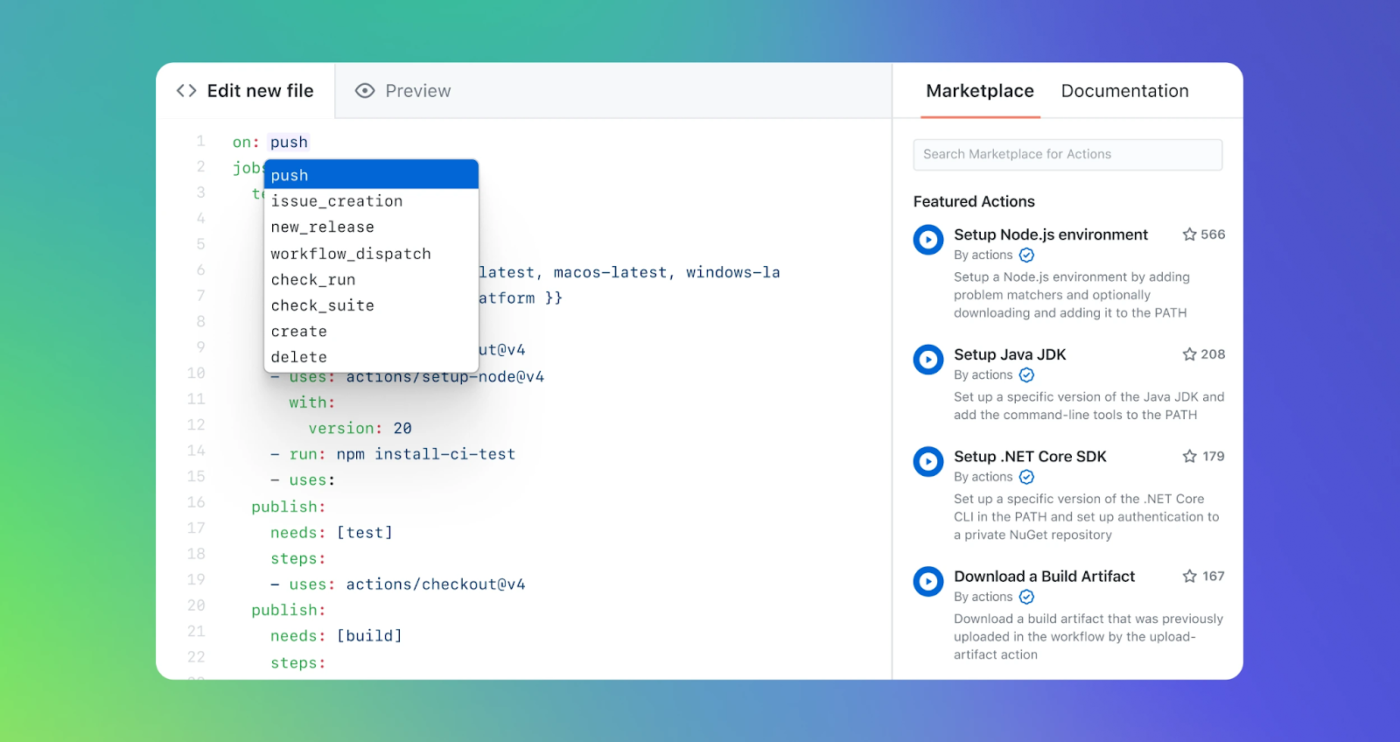
Switching between code and project management disrupts developer flow. GitHub embeds project management within the development process, integrating issue tracking, project boards, and GitHub Actions for automation.
While Linear offers issue tracking, GitHub connects tasks directly to code changes and pull requests. Its developer-first approach eliminates tool switching, making it a more seamless choice for teams that want project management tightly integrated with their coding workflow.
GitHub best features
- Create custom project board automations
- Design repository-linked workflows
- Set up code review automation
- Build custom CI/CD pipelines
- Configure security scanning rules
- Enable automated dependency updates
GitHub limitations
- Limited non-technical project management features
- Basic reporting capabilities
GitHub pricing
- Free: Basic features
- Team: $4/month per user
- Enterprise: $21/month per user
GitHub ratings and reviews
- G2: 4.7/5 (2,000+ reviews)
- Capterra: 4.8/5 (6,000+ reviews)
13. Notion (Best for documentation-heavy projects)

Notion blends project management with collaborative documentation, using a block-based system for custom workspaces.
Unlike Linear, which separates documentation and tracking, Notion creates a fluid workspace where teams can integrate knowledge bases, databases, and project planning.
Its flexible structure surpasses Linear’s rigid organization, making it ideal for teams prioritizing documentation and task management. While Linear focuses on development, Notion offers a more adaptable workspace for diverse team needs.
Notion best features
- Create relational database views
- Design custom knowledge bases
- Set up automated page structures
- Build dynamic content relationships
- Configure custom property formulas
- Enable nested database filtering
Notion limitations
- Limited native integrations
- Project management features require setup
Notion pricing
- Free: Basic features
- Plus: $12/month per user
- Business: $18/month per user
- Enterprise: Contact for pricing
Notion ratings and reviews
- G2: 4.7/5 (5,000+ reviews)
- Capterra: 4.7/5 (2,000+ reviews)
What are real-life users saying about Notion?
A user shared how Notion’s versatility enhances both work and personal projects:
Choose ClickUp: The Right Linear Alternative
The best project management tool depends on your team’s workflows, size, and long-term goals.
When evaluating Linear alternatives, consider scalability, integration with your existing development tools, and ease of adoption. A tool should enhance efficiency without adding unnecessary complexity.
Look for solutions that offer flexibility, robust collaboration features, and pricing that aligns with your budget.
ClickUp is the ultimate Linear alternative, offering unmatched flexibility, advanced project tracking, and deep customization. Whether managing development tasks or cross-functional projects, ClickUp adapts to your needs.
Ready to optimize your workflow? Sign up for ClickUp and transform how your team works.





